Patagonia Travel offers unparalleled adventures, and SIXT.VN is here to ensure your journey is seamless. This comprehensive guide provides essential travel tips and insights, ensuring an unforgettable experience in this stunning region, alongside convenient travel services from SIXT.VN. From navigating windy conditions to savoring local cuisine, we’ll help you make the most of your Patagonian escapade with our travel guidance, hotel booking services and customizable tour packages.
1. Understanding Patagonia: What Makes It a Unique Travel Destination?
Patagonia, a vast region at the southern tip of South America, is renowned for its dramatic landscapes. It is a land of contrasts, featuring everything from towering granite peaks and expansive glaciers to windswept steppes and vibrant blue lakes. This diverse geography makes Patagonia a haven for outdoor enthusiasts and nature lovers.
- Geographical Diversity: Patagonia spans across Argentina and Chile, offering varied landscapes. According to the Argentine Institute of Statistics and Census, the region covers approximately 1,043,076 square kilometers, showcasing unique ecosystems.
- Adventure Opportunities: The region offers a wide array of activities, including hiking, trekking, glacier exploration, and wildlife spotting.
- Unique Climate: Be prepared for unpredictable weather, with strong winds and fluctuating temperatures. The summer months (December to February) are the most popular due to milder conditions, but the wind can be intense.
2. Planning Your Patagonia Travel: Essential Tips Before You Go
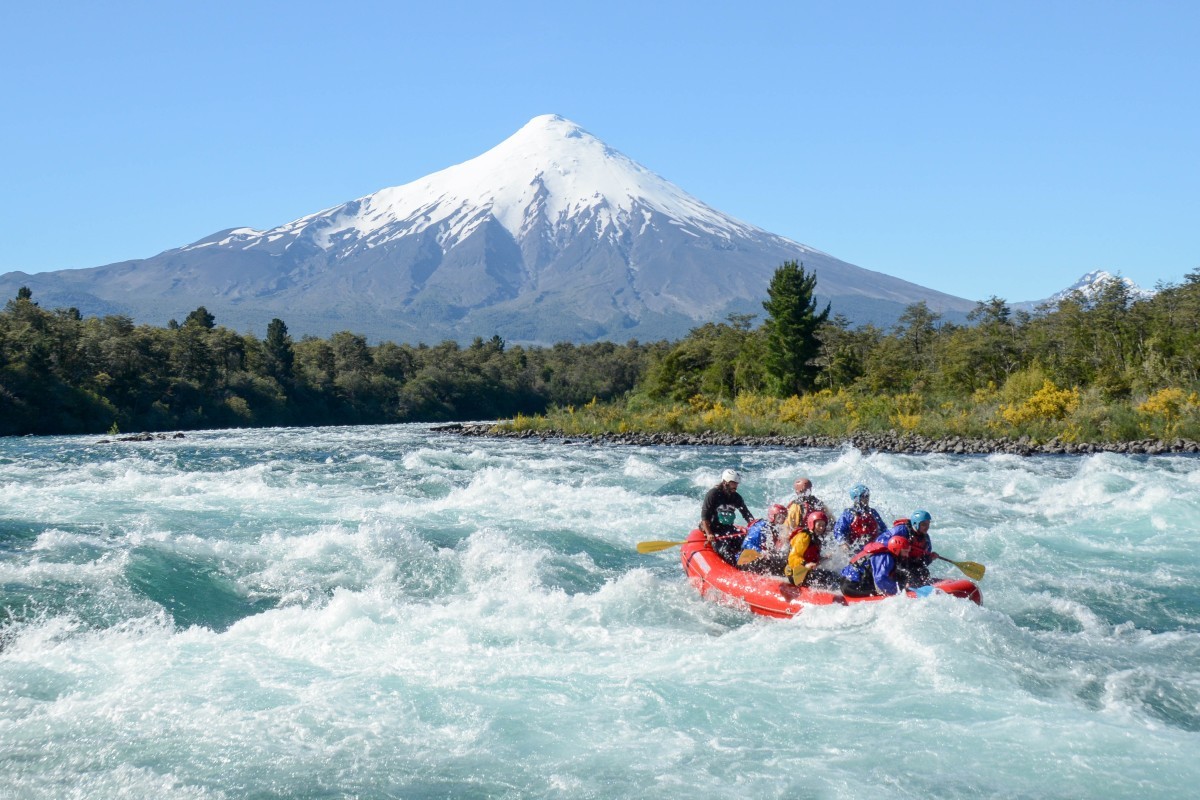 Patagonia's stunning landscapes are waiting to be explored.
Patagonia's stunning landscapes are waiting to be explored.
Planning your Patagonia trip requires careful consideration of several factors to ensure a smooth and enjoyable experience.
2.1. Best Time to Visit Patagonia
- Summer (December to February): This is the peak season with the warmest temperatures and longest daylight hours. It’s ideal for trekking and outdoor activities, but expect more crowds.
- Shoulder Seasons (October/November & March/April): These months offer a balance of good weather and fewer tourists. The spring wildflowers and autumn foliage provide stunning scenery.
- Winter (May to September): Many areas are inaccessible due to snow and ice. However, some ski resorts remain open.
2.2. Duration of Stay in Patagonia
The ideal duration for a Patagonia trip depends on your interests and the areas you want to explore.
- Short Trip (5-7 days): Focus on one specific area like Torres del Paine or Los Glaciares National Park.
- Mid-Length Trip (8-14 days): Explore multiple highlights in either Argentina or Chile.
- Extended Trip (15+ days): Traverse both the Argentinian and Chilean sides, and delve deeper into less-visited regions.
2.3. Budgeting for Patagonia Travel
Patagonia can be an expensive destination, so careful budgeting is crucial.
- Accommodation: Prices range from budget hostels to luxury hotels. Booking in advance is highly recommended, especially during peak season. With SIXT.VN, you can find accommodations that fit your budget and preferences.
- Transportation: Options include rental cars, buses, and domestic flights. Consider the distances and road conditions when choosing your mode of transport. SIXT.VN offers convenient airport transfer services and car rental options.
- Activities: Costs vary depending on the type of activity. Trekking permits, guided tours, and park entrance fees should be factored into your budget.
- Food: Dining out can be pricey. Consider self-catering or packing snacks to save money.
2.4. Travel Insurance for Patagonia
Comprehensive travel insurance is essential for any Patagonia trip.
- Medical Coverage: Ensure your policy covers medical emergencies, including evacuation.
- Trip Cancellation/Interruption: Look for coverage that protects you in case of unforeseen events like flight cancellations or natural disasters.
- Adventure Activities: Confirm that your policy covers activities like trekking, climbing, and water sports.
2.5. Essential Documents for Patagonia
Ensure you have all necessary documents for a smooth entry and travel experience.
- Passport: Must be valid for at least six months beyond your planned stay.
- Visas: Check visa requirements based on your nationality. Many countries can enter Argentina and Chile visa-free for tourism.
- Travel Insurance Details: Carry a copy of your insurance policy and emergency contact information.
- Flight and Accommodation Confirmations: Have printed or digital copies of your bookings.
- Driver’s License: If renting a car, an international driver’s license may be required.
3. Navigating Patagonia’s Unique Challenges: Weather, Border Crossings, and Crowds
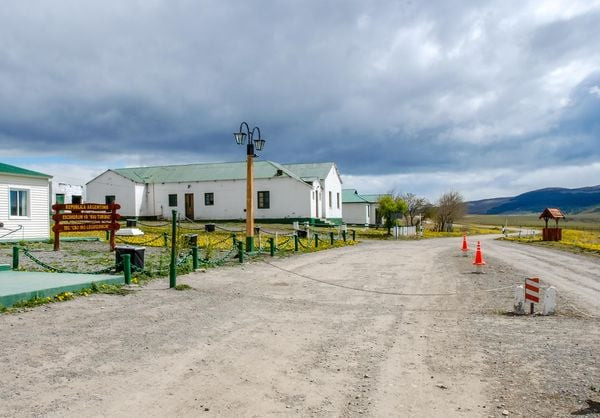 Crossing the border in Patagonia is an adventure.
Crossing the border in Patagonia is an adventure.
Patagonia presents unique challenges that travelers should be prepared for. Understanding these potential obstacles will help you navigate the region more effectively.
3.1. Dealing with Patagonia’s Windy Weather
Patagonia is notorious for its strong winds, especially during the summer months.
- Why is it so windy? Patagonia’s location in the “roaring forties” between latitudes 40° and 50° in the Southern Hemisphere exposes it to persistent westerly winds.
- How to prepare:
- Pack windproof gear: Invest in a high-quality windproof jacket and pants.
- Layer your clothing: Dress in layers to adjust to fluctuating temperatures.
- Protect your face: Use a scarf or balaclava to shield your face from the wind.
- Secure your belongings: Keep a firm grip on hats, maps, and other loose items.
3.2. Border Crossing Between Argentina and Chile
The border between Argentina and Chile stretches for 3,298 miles (5,308 km), and crossing it can be an adventure in itself.
- Crossing Points: Be aware that there are fewer crossing points than you might expect due to the vast wilderness.
- Expect the Unexpected: Border crossings can be subject to delays and thorough inspections.
- Tips for a smooth crossing:
- Fill out forms in advance: Complete any necessary paperwork before arriving at the border.
- Declare food items: Be aware of restrictions on bringing certain foodstuffs like seeds, honey, and meat into Chile.
- Be patient: Border officials may conduct thorough searches of your luggage.
- Enjoy the Adventure: Embrace the unique experience of traversing the wild no-man’s land between countries.
3.3. Avoiding Crowds in Popular Spots
Patagonia has become an increasingly popular travel destination, and certain hotspots can get crowded, especially during peak season.
- Perito Moreno Glacier: This is one of the most visited sites in Patagonia.
- Base of the Towers Trek: A popular day hike in Torres del Paine National Park.
- Tips for avoiding crowds:
- Visit during the shoulder seasons: Consider traveling in October/November or March/April for fewer tourists.
- Start early: Begin your hikes early in the morning to avoid the midday rush.
- Explore lesser-known trails: Seek out hikes away from the main viewpoints.
- Venture beyond the hotspots: Discover the vast open spaces that Patagonia has to offer.
3.4. Staying Connected in Remote Areas
Patagonia is known for its vast, remote landscapes, which can present challenges for staying connected.
- Limited Cell Service: Cell phone coverage can be spotty or non-existent in many areas, especially in national parks and remote trails.
- Wi-Fi Availability: Wi-Fi is typically available in towns and cities, but it may be limited or unreliable in more isolated locations.
- Tips for Staying Connected:
- Purchase a Local SIM Card: Consider buying a local SIM card for better data coverage in populated areas.
- Download Offline Maps: Download offline maps and navigation tools to your smartphone or GPS device.
- Inform Family and Friends: Let your loved ones know your itinerary and expected check-in times.
- Consider a Satellite Device: For extended treks or remote adventures, a satellite phone or messaging device can be a valuable safety tool.
4. Exploring Patagonia’s Highlights: Must-See Destinations and Activities
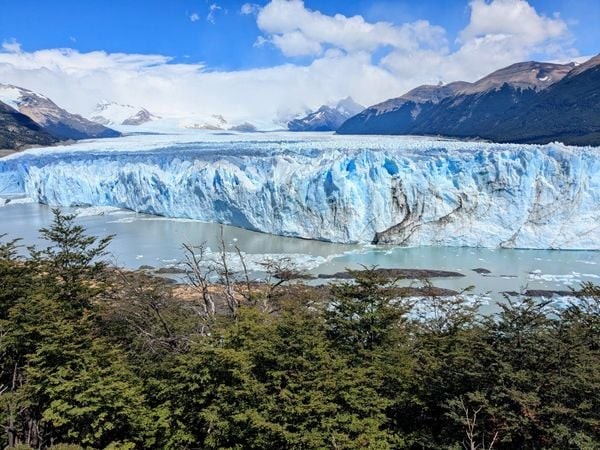 Explore the breathtaking Perito Moreno Glacier.
Explore the breathtaking Perito Moreno Glacier.
Patagonia offers a plethora of stunning destinations and activities. Here are some must-see highlights for your trip.
4.1. Los Glaciares National Park, Argentina
Home to the iconic Perito Moreno Glacier and Mount Fitz Roy, this park is a UNESCO World Heritage site.
- Perito Moreno Glacier: Witness the spectacle of ice calving into the turquoise waters.
- Mount Fitz Roy: Hike to the base of this majestic peak for breathtaking views.
- Upsala Glacier: Take a boat tour to see this massive glacier and its surrounding icebergs.
4.2. Torres del Paine National Park, Chile
Renowned for its granite spires and stunning landscapes, this park is a trekker’s paradise.
- The W Trek: A classic multi-day trek that takes you through the park’s highlights.
- Base of the Towers Trek: A challenging day hike to the base of the iconic granite towers.
- Grey Glacier: Explore this impressive glacier by boat or kayak.
4.3. Bariloche, Argentina
Located in the Lake District, Bariloche is known for its Swiss-Alpine architecture and outdoor activities.
- Nahuel Huapi Lake: Enjoy boat trips, kayaking, and fishing on this beautiful lake.
- Cerro Catedral: Visit this popular ski resort for skiing in winter and hiking in summer.
- Chocolate Shops: Indulge in the region’s famous artisan chocolates.
4.4. Ushuaia, Argentina
Known as the southernmost city in the world, Ushuaia is a gateway to Antarctica and offers unique experiences.
- Beagle Channel: Take a boat tour to see wildlife like penguins, sea lions, and seabirds.
- Tierra del Fuego National Park: Explore this park’s forests, peat bogs, and coastline.
- Maritime Museum: Learn about the region’s maritime history.
4.5. El Calafate, Argentina
This town is the gateway to Los Glaciares National Park and offers a variety of activities.
- Glaciarium Patagonian Ice Museum: Explore this museum dedicated to glaciers and ice.
- Lago Argentino: Stroll along the shoreline and enjoy views of the lake.
- Estancias: Visit traditional Patagonian ranches to experience rural life.
5. Immersing in Patagonian Culture: Meeting Locals and Savoring Cuisine
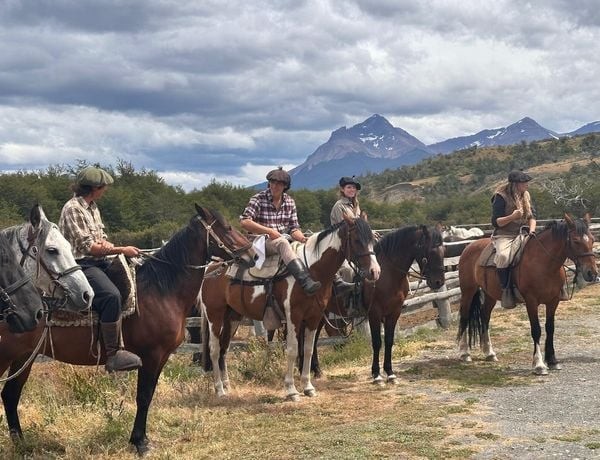 Connect with the locals in Patagonia.
Connect with the locals in Patagonia.
A trip to Patagonia is not just about the landscapes; it’s also about the people and their unique culture.
5.1. Getting to Know the Locals
- Engage in conversations: Take the time to chat with locals and learn about their experiences.
- Visit local establishments: Support local businesses by shopping in artisan shops and dining in family-run restaurants.
- Respect local customs: Be mindful of cultural norms and traditions.
5.2. Exploring Patagonian Cuisine
Patagonia’s cuisine is a delightful blend of Argentinian and Chilean flavors, with unique regional specialties.
- Cordero al Palo: Spit-roasted lamb is a Patagonian classic, slow-cooked over a wooden fire.
- Seafood in Ushuaia: Enjoy fresh seafood from the Beagle Channel, including king crab.
- Empanadas: Try cheese and spinach empanadas, a popular snack across Latin America.
- Calafate Berries: Sample products made with these local berries, such as ice cream and pisco sour.
5.3. Visiting Estancias (Cattle Ranches)
Experiencing life on a Patagonian estancia offers a glimpse into the region’s rural heritage.
- Horseback Riding: Enjoy guided horseback rides through the steppe.
- Sheep Shearing Demonstrations: Witness traditional sheep shearing techniques.
- Asado: Indulge in a traditional Argentinian barbecue with grilled meats and local wines.
5.4. Exploring Local Towns and Cities
Don’t miss the opportunity to explore Patagonia’s unique towns and cities.
- Ushuaia: Visit the Malvinas War Memorial and stroll down San Martin, the main street.
- El Calafate: Explore the town’s winery and the Glaciarium Patagonian Ice Museum.
- Puerto Natales: Walk along the waterfront and admire the Monumento al Viento.
6. Sustainable Patagonia Travel: Responsible Tourism Practices
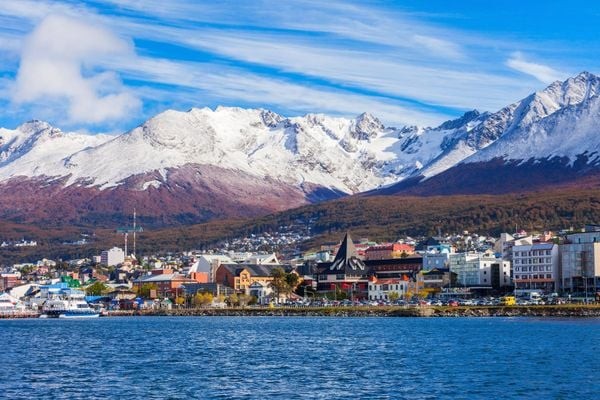 Respect the environment when traveling in Patagonia.
Respect the environment when traveling in Patagonia.
Preserving Patagonia’s pristine environment is crucial for future generations. Here are some responsible tourism practices to consider.
6.1. Respecting the Environment
- Stay on marked trails: Avoid straying from established paths to protect fragile ecosystems.
- Leave no trace: Pack out all trash and minimize your impact on the environment.
- Respect wildlife: Observe animals from a distance and avoid feeding them.
- Conserve water and energy: Be mindful of your water and energy usage.
6.2. Supporting Local Communities
- Shop local: Purchase souvenirs and goods from local artisans and businesses.
- Eat at local restaurants: Enjoy traditional cuisine at family-run eateries.
- Hire local guides: Support local employment by hiring knowledgeable guides.
- Stay in locally-owned accommodations: Choose guesthouses and hotels that are owned and operated by locals.
6.3. Minimizing Your Carbon Footprint
- Choose eco-friendly transportation: Opt for buses or shared transportation whenever possible.
- Fly direct: Reduce your carbon emissions by flying direct flights.
- Offset your carbon emissions: Consider purchasing carbon offsets to mitigate the impact of your travel.
6.4. Following Park Regulations
- Obtain necessary permits: Secure permits for trekking and camping in national parks.
- Adhere to park guidelines: Follow all rules and regulations set by park authorities.
- Be aware of fire restrictions: Avoid lighting fires in unauthorized areas.
7. Practical Patagonia Travel Tips: Packing Essentials and Health Advice
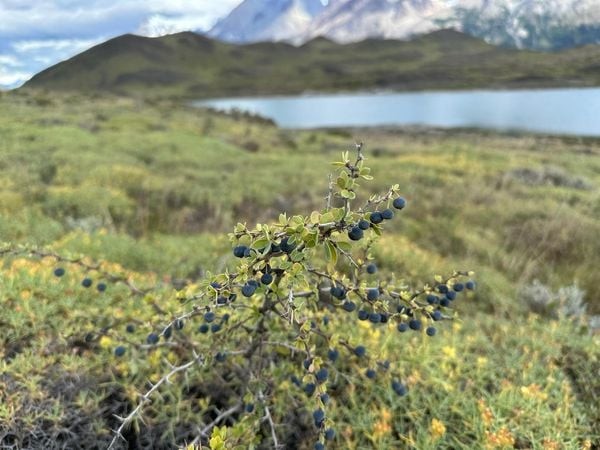 Pack essential items for a safe and enjoyable trip.
Pack essential items for a safe and enjoyable trip.
Being well-prepared is key to a safe and enjoyable Patagonia trip.
7.1. Essential Packing List for Patagonia
- Clothing:
- Windproof and waterproof jacket: Essential for protection against the elements.
- Layers: Pack thermal underwear, fleece jackets, and insulated pants.
- Hiking boots: Sturdy and comfortable hiking boots are a must for trekking.
- Gloves, hat, and scarf: Protect yourself from the cold and wind.
- Gear:
- Backpack: Choose a comfortable and durable backpack for day hikes.
- Water bottle or hydration pack: Stay hydrated during outdoor activities.
- Sunscreen and sunglasses: Protect yourself from the intense Patagonian sun.
- Headlamp or flashlight: Useful for camping and navigating in the dark.
- Personal Items:
- First-aid kit: Include essential medications and supplies for minor injuries.
- Insect repellent: Protect yourself from mosquitoes and other insects.
- Camera: Capture the stunning landscapes and wildlife.
- Binoculars: Enhance your wildlife viewing experience.
7.2. Health and Safety Advice for Patagonia
- Consult your doctor: Discuss any necessary vaccinations and health precautions before your trip.
- Altitude sickness: Be aware of the symptoms of altitude sickness and take necessary precautions.
- Food and water safety: Drink bottled or purified water and be cautious of foodborne illnesses.
- Sun protection: Use sunscreen, sunglasses, and a hat to protect yourself from the sun.
- Emergency contacts: Keep a list of emergency contacts and local emergency numbers.
7.3. Recommended Vaccinations and Health Precautions
Consult your healthcare provider to determine the necessary vaccinations and health precautions based on your individual health status and travel plans. Generally recommended vaccinations and health precautions for Patagonia include:
- Hepatitis A and B: Vaccinations are recommended for protection against these liver infections.
- Typhoid: Vaccination is recommended, especially if you plan to eat at local establishments.
- Tetanus-diphtheria: Ensure your tetanus-diphtheria vaccination is up to date.
- Yellow Fever: Not typically required unless you are traveling from a country with a risk of yellow fever transmission.
- Traveler’s Diarrhea: Pack medications and follow food and water safety guidelines to prevent traveler’s diarrhea.
7.4. Staying Safe During Outdoor Activities
- Check weather conditions: Be aware of weather forecasts and plan accordingly.
- Inform someone of your plans: Let someone know your itinerary and expected return time.
- Carry a map and compass: Familiarize yourself with the terrain and navigation techniques.
- Be aware of wildlife: Take precautions to avoid encounters with potentially dangerous animals.
8. Using SIXT.VN for Your Patagonia Travel Needs
SIXT.VN offers a range of services to make your Patagonia travel experience seamless and convenient.
8.1. Airport Transfer Services
- Hassle-free transportation: Avoid the stress of finding transportation upon arrival.
- Reliable and comfortable: Enjoy a comfortable and reliable ride to your accommodation.
- Professional drivers: Our experienced drivers ensure a safe and efficient transfer.
8.2. Hotel Booking Services
- Wide selection of accommodations: Choose from a variety of hotels to suit your budget and preferences.
- Competitive prices: Enjoy competitive rates and exclusive deals on accommodations.
- Convenient booking process: Easily book your hotel through our user-friendly platform.
8.3. Tour Packages and Itineraries
- Customized tours: Tailor your Patagonia experience to your interests and preferences.
- Expert guides: Benefit from the knowledge and expertise of our local guides.
- Hassle-free planning: Let us take care of the details, so you can focus on enjoying your trip.
8.4. Car Rental Services
- Flexible exploration: Explore Patagonia at your own pace with a rental car.
- Wide range of vehicles: Choose from a variety of vehicles to suit your needs.
- Convenient pick-up and drop-off locations: Pick up and drop off your rental car at convenient locations.
9. Patagonia Travel FAQs: Addressing Common Concerns
Here are some frequently asked questions about Patagonia travel to help you plan your trip.
9.1. What is the best time to visit Patagonia?
The best time to visit Patagonia is during the summer months (December to February) for the warmest temperatures and longest daylight hours. The shoulder seasons (October/November & March/April) offer a balance of good weather and fewer tourists.
9.2. How do I deal with the strong winds in Patagonia?
Pack windproof gear, layer your clothing, and protect your face with a scarf or balaclava.
9.3. What are the requirements for crossing the border between Argentina and Chile?
Fill out forms in advance, declare food items, and be prepared for thorough inspections.
9.4. How can I avoid crowds in popular spots like Torres del Paine?
Visit during the shoulder seasons, start your hikes early, and explore lesser-known trails.
9.5. Is Patagonia an expensive destination?
Yes, Patagonia can be an expensive destination. Budget carefully for accommodation, transportation, activities, and food.
9.6. What are some must-see destinations in Patagonia?
Los Glaciares National Park, Torres del Paine National Park, Bariloche, and Ushuaia are some must-see destinations.
9.7. What type of clothing should I pack for Patagonia?
Pack windproof and waterproof jackets, layers of clothing, sturdy hiking boots, gloves, hat, and scarf.
9.8. How can SIXT.VN help with my Patagonia travel plans?
SIXT.VN offers airport transfer services, hotel booking services, tour packages, and car rental services.
9.9. What are some sustainable tourism practices I should follow in Patagonia?
Respect the environment, support local communities, minimize your carbon footprint, and follow park regulations.
9.10. What should I do in case of a medical emergency in Patagonia?
Ensure you have comprehensive travel insurance, carry a first-aid kit, and know the local emergency numbers.
10. Embark on Your Patagonia Travel Adventure with SIXT.VN
Ready to explore the breathtaking landscapes of Patagonia? Let SIXT.VN be your trusted partner in planning an unforgettable trip. From airport transfers and hotel bookings to customized tour packages, we’ve got you covered. Contact us today and start planning your Patagonia adventure with ease and convenience.
Address: 260 Cau Giay, Hanoi, Vietnam
Hotline/Whatsapp: +84 986 244 358
Website: SIXT.VN
Let SIXT.VN turn your Patagonia travel dreams into reality with our expert services and personalized support.



